First stop, it’s diamond curation.
While most people are familiar with the 4Cs (thanks Google), we consider a 5th C to be the key to finding a truly beautiful diamond, and that is curation.
What I believe is judging the true fire and brilliance of a diamond should be with the human eye. It’s something you simply can’t see on a digital diamond report or gem certificate.
It’s the combination of all the Cs that we look out for that determines whether or not this diamond is By Bonnie Approved.
Additionally, details beyond the Cs, which also includes fluorescence, how large the stone faces up, and more.
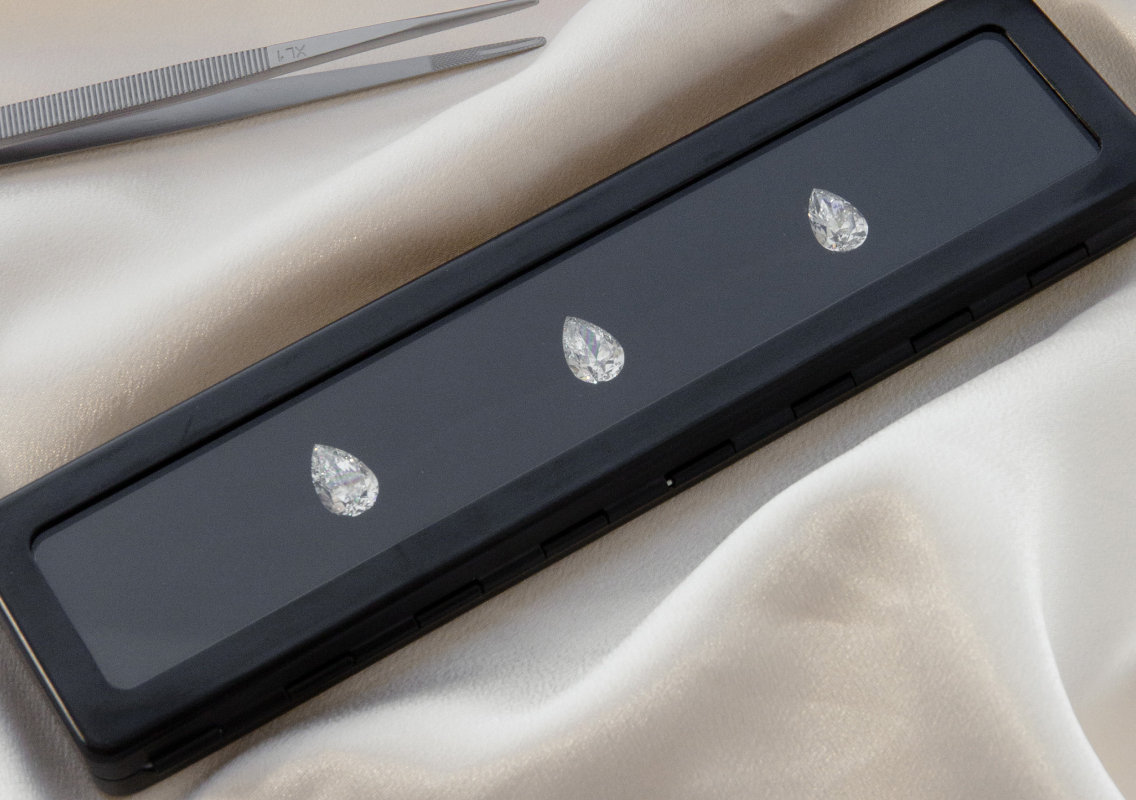

Then comes Carat, Cut, Color and Clarity.


Carat
Diamond Size is the first thing people notice.
Many people think that the heavier the carats, the larger looking the diamond is. That’s definitely not always the case. For example, an elongated 1.90ct (1.48 Ratio) Oval, will look larger than a 2.0ct (1.32 Ratio). Two 2ct diamonds can have vastly different measurements based on the ratios and quality of their cuts.
You want to strike a balance between having a diamond that faces up larger but not too shallow where you see light leakage.
Cut
This is how well a diamond's facets interact with light.
Diamond cutting is an extremely precise art. Of all the 4Cs, cut is the one specification created by human hands. The term “make” is another word we use to describe how well the stone is cut. A “top make” diamond with excellent proportions, symmetry and polish can be the difference between a sparkler and a firework of a diamond on your finger. We look for diamonds that aren’t cut too deep or shallow, with excellent fire, brightness and scintillation.
Cut of a diamond is not to be confused with Shape of a diamond. (Round, Oval, Cushion etc).
Remember, GIA does not give any official “cut” grade in any shapes besides Round. Why? Simply because there are too many variations and cutting patterns of how a fancy shape diamond can be cut. For example, cushion brilliant vs crush-ice cushion, both are beautiful just depends on your personal preference! Therefore, there isn’t one cutting style better than the other to say which is more superior than the other.
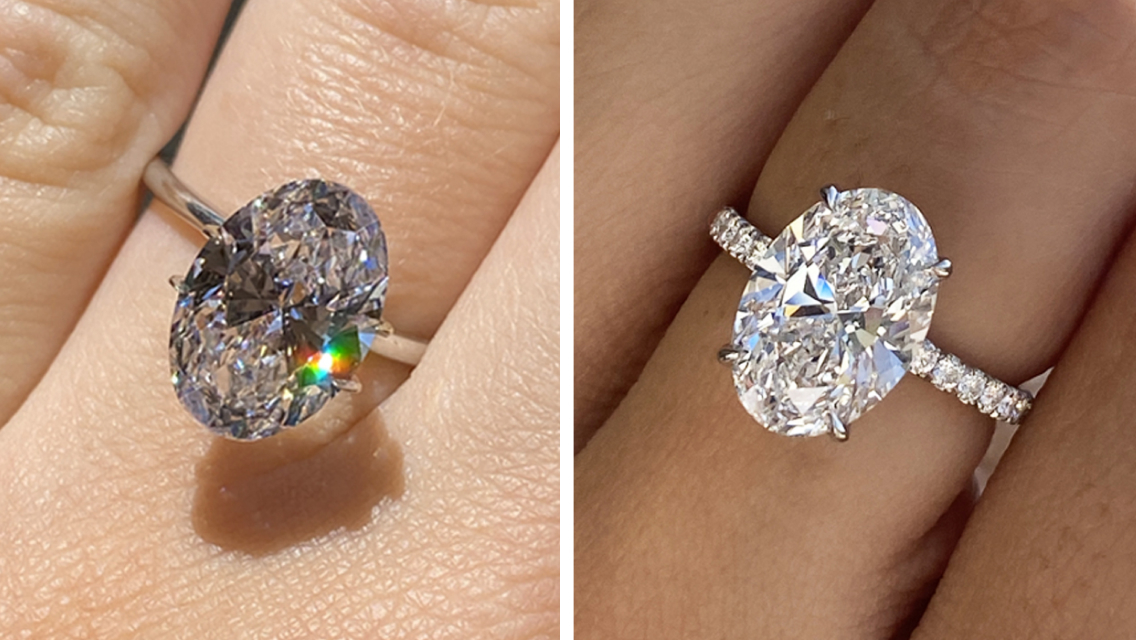



Color
Diamond color actually means lack of color.
Fun Fact: Why does the color grading start with D, and not A?
Before GIA universalized the D-to-Z Color Grading Scale, there was no clear standard to define what diamond color is. A variety of other systems were used loosely, from A, B, and C (used without clear definition), to Arabic (0, 1, 2, 3) and Roman (I, II, III) numbers, to descriptive terms like “gem blue” or “blue white,” which are notorious for misinterpretation.
So, the creators of the GIA Color Scale wanted to start fresh, without any association with earlier systems. Thus the GIA scale starts at the letter D.
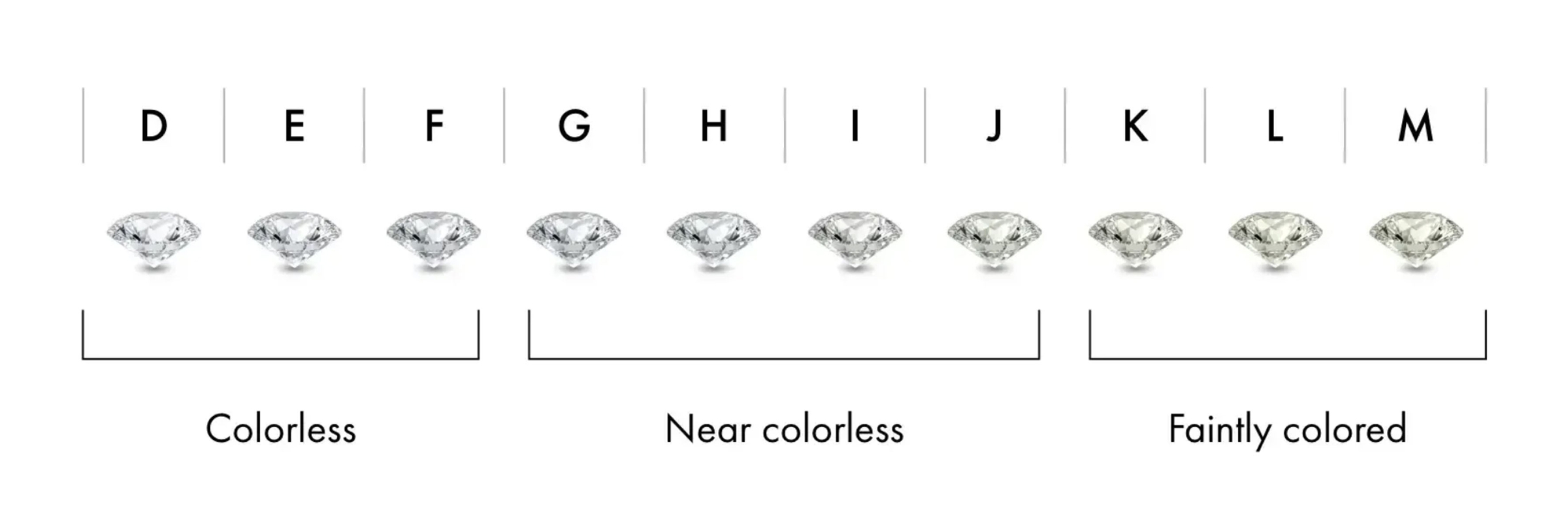

Clarity
The absence of inclusions in a diamond are referred to as clarity.
To understand diamond clarity, you must first understand how diamonds are created. Natural diamonds are the result of carbon exposed to tremendous heat and pressure deep in the earth. That’s why we’d like to describe the internal and external inclusions of a diamond as “birthmarks” of a stone and not “flaws”.
Evaluating diamond clarity involves determining the number, size, nature, position of these characteristics, and how these affect the overall appearance of the stone. There is no single diamond that is perfectly pure but the closer it is to being so, the higher its value will be.
Just because you have a dot or blemish somewhere, doesn’t make you flawed. It makes you unique and one-of-a-kind. As gemologists, we actually use inclusions to help distinguish natural vs lab grown diamonds.
Fun Fact: Inclusions such as knots, twinning wisps, diamond crystals, other minerals, naturals, and indented naturals are all evidence of a stone that has been formed naturally.


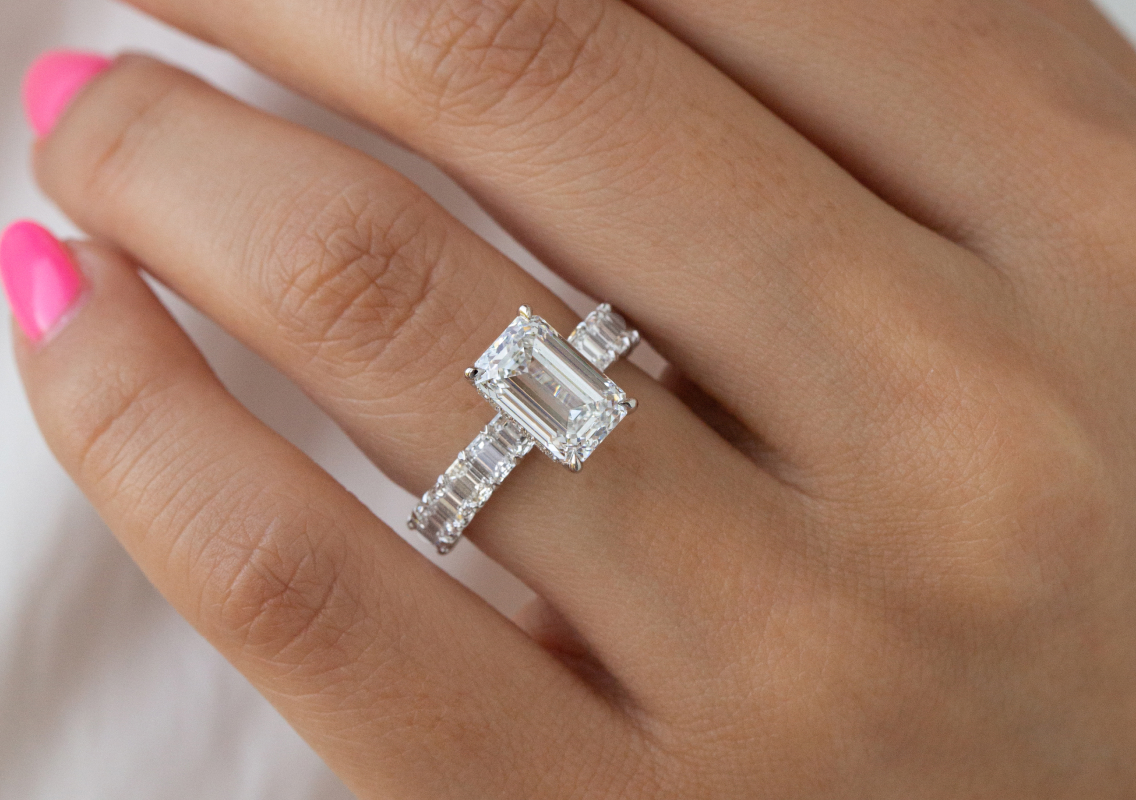

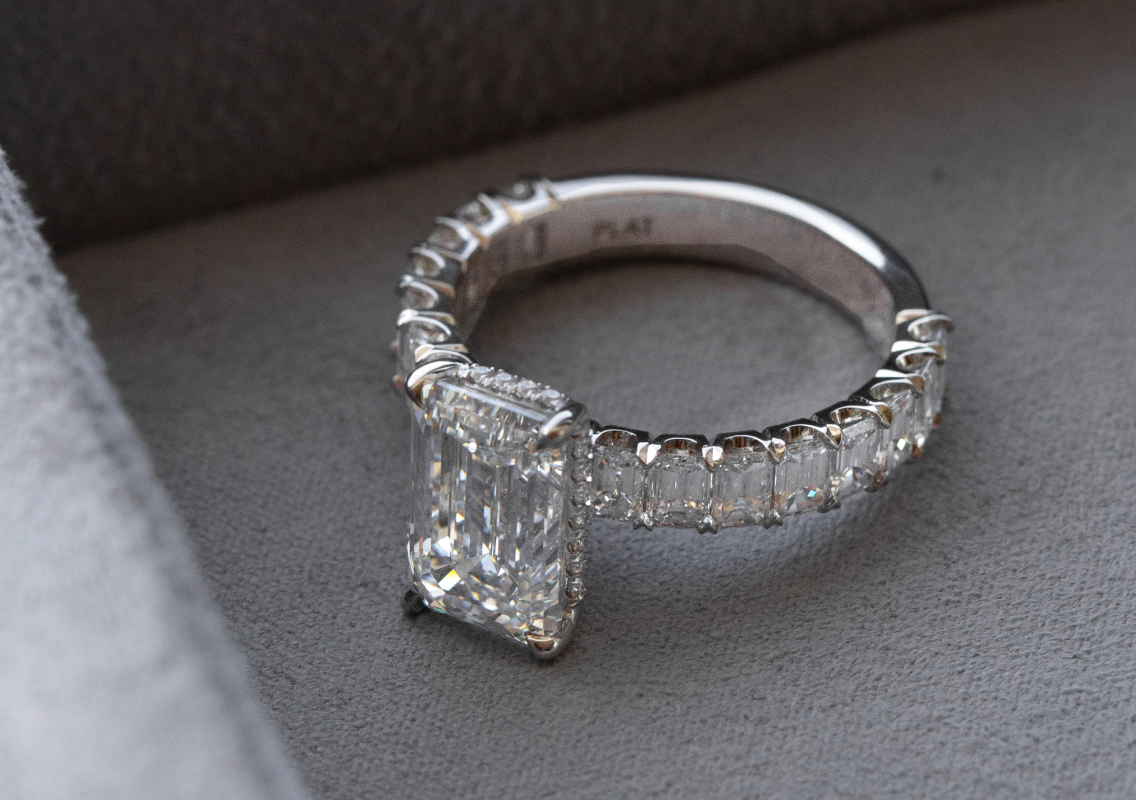

Fluorescence
Not technically a 4C, but just as important.
“Bonnie, I only want to buy a diamond with no fluorescence”.
Wait a minute, let’s first understand, what is diamond fluorescence?
Fluorescence is the glow you sometimes see in diamonds when exposed to UV rays from sources like the sun, causing them to emit a bluish light. A very common misconception, “If a diamond has fluorescence, it doesn’t sparkle as much”. That’s simply a false statement. Bonnie owns plenty of diamonds with fluorescence in her personal collection. (And they sparkle a lot)
If you read enough online articles, you will often read “avoid fluorescence because it can cause milky or cloudiness in a diamond”. Well, yes it can. But what percentage of it actually does?
0.02% out of all diamonds submitted to GIA with strong fluorescence actually appear hazy or oily. You read that right!
GIA studies show that for the overwhelming majority of diamonds, the strength of fluorescence has no widely noticeable effect on appearance. In the GIA Fluorescence Study, it was found that the average person could NOT make a distinction between a diamond with fluorescence and a diamond without.
And in many instances, observers actually prefer the appearance of diamonds that have medium to strong fluorescence.
Fun Fact: Fluorescence actually helps lower color grade diamonds look much whiter!
Interesting right?
If you have seen as many diamonds as our team have in the past decade, you will understand why rejecting diamonds simply because they have fluorescence is silly and adds more weight onto your wallet!
Trust the By Bonnie Curation process, and you will be happy to know that we have your back on ALL aspects of your diamond. And most importantly, SPARKLE!



